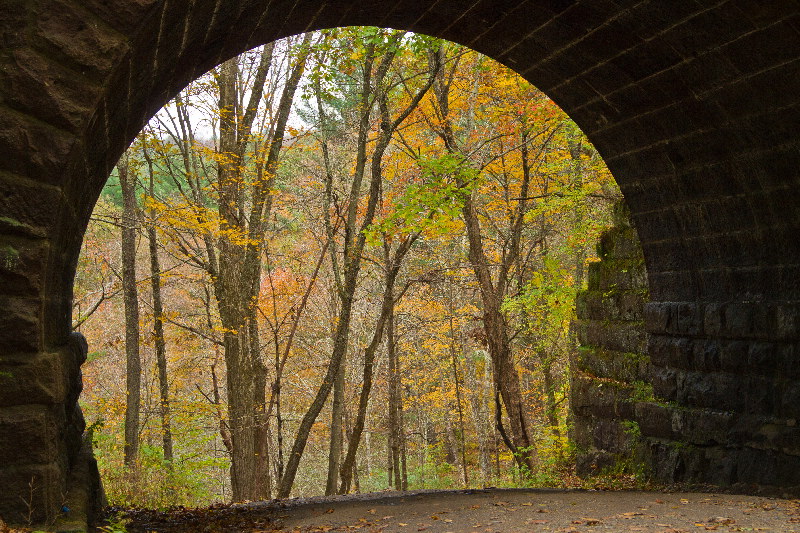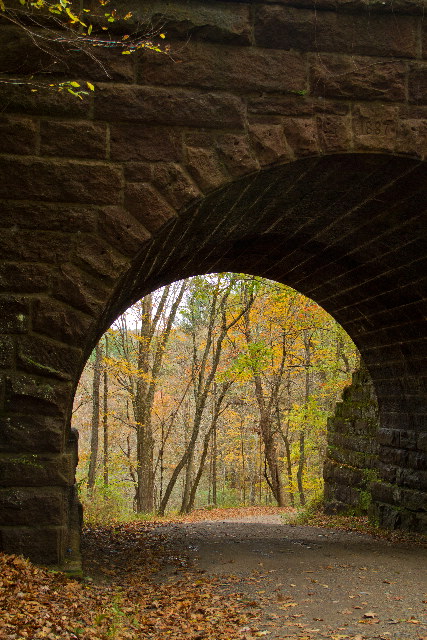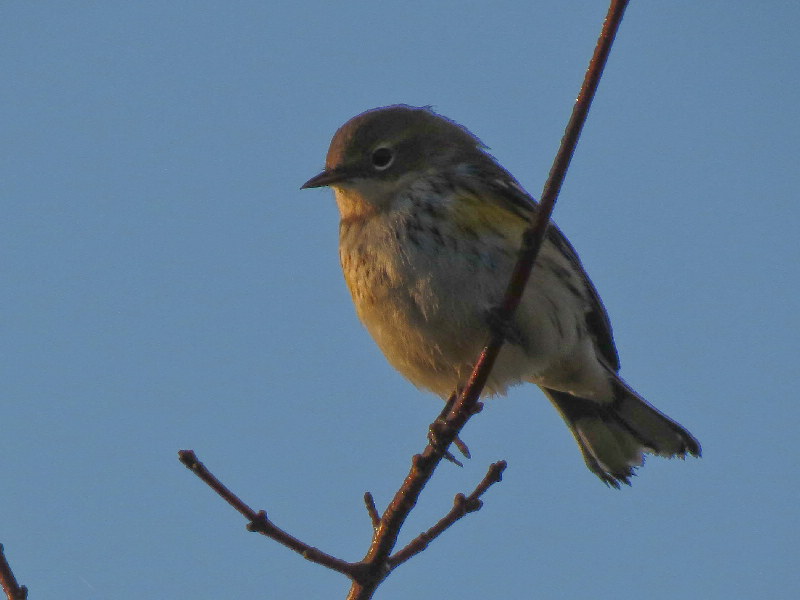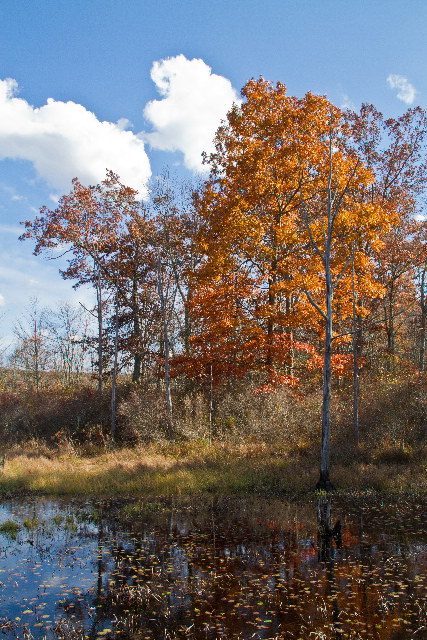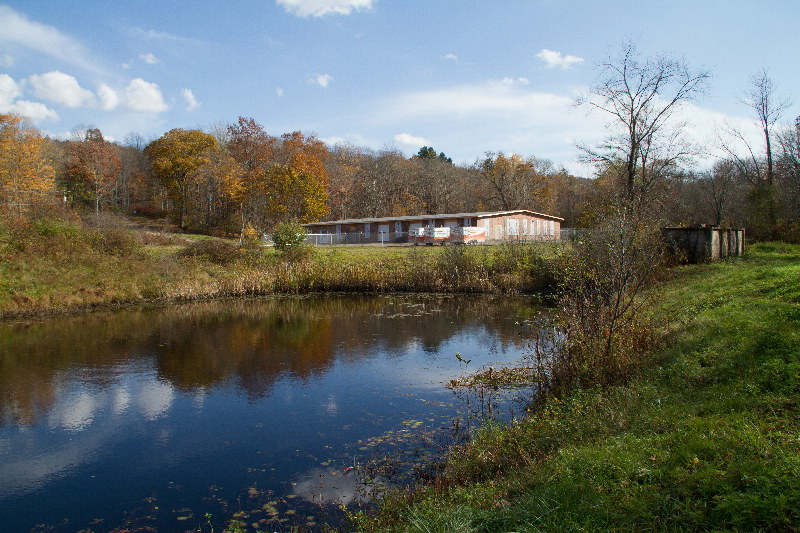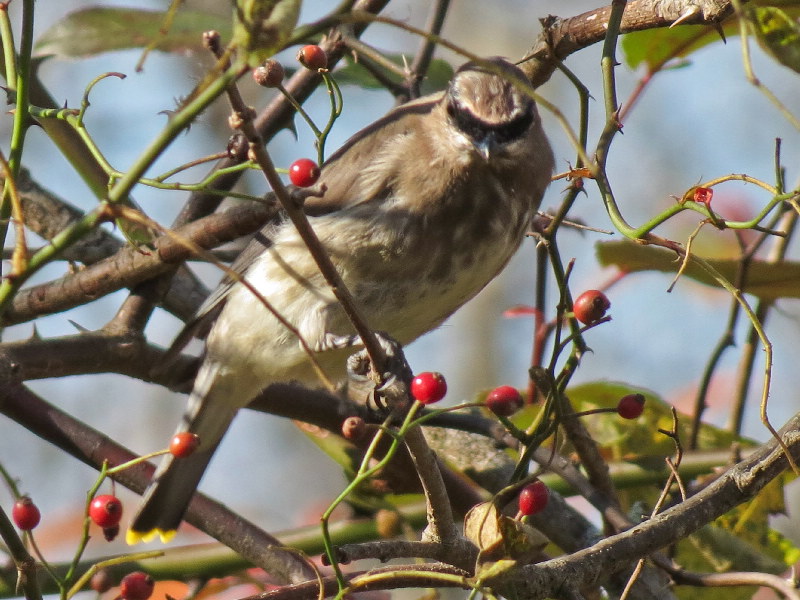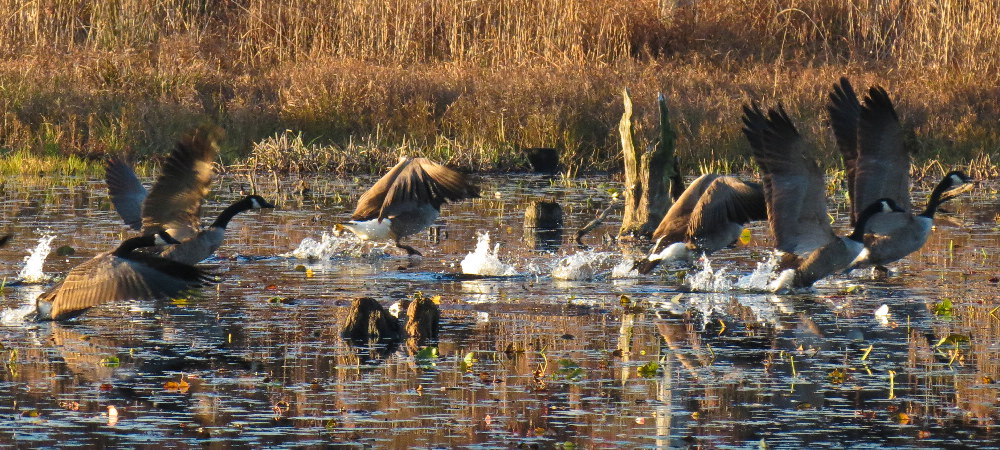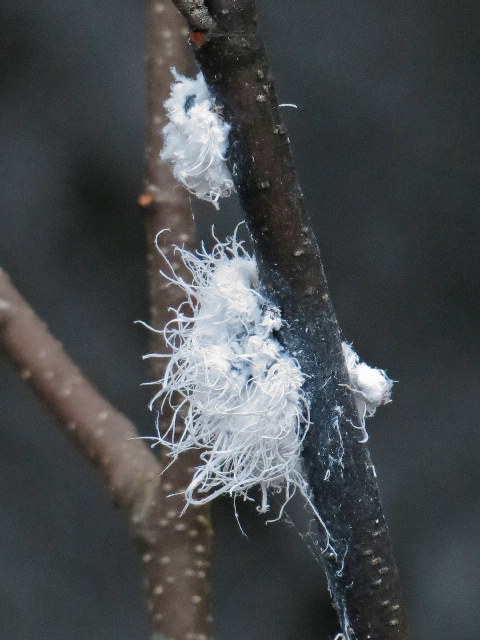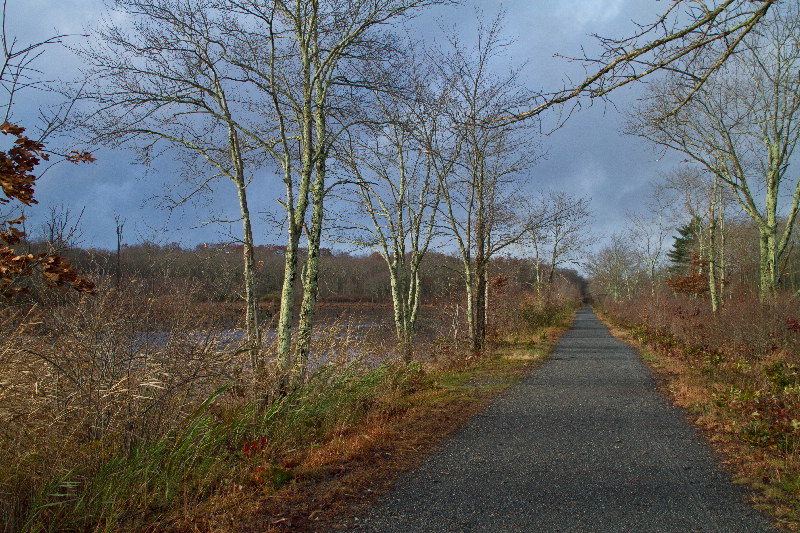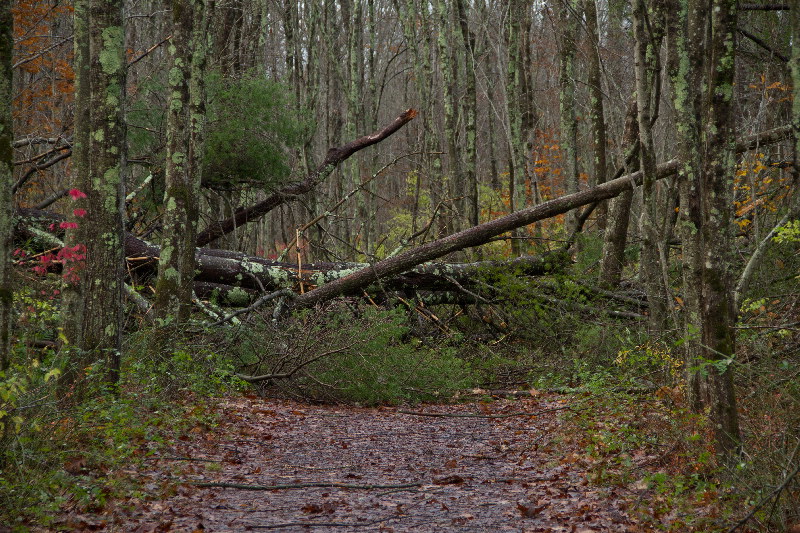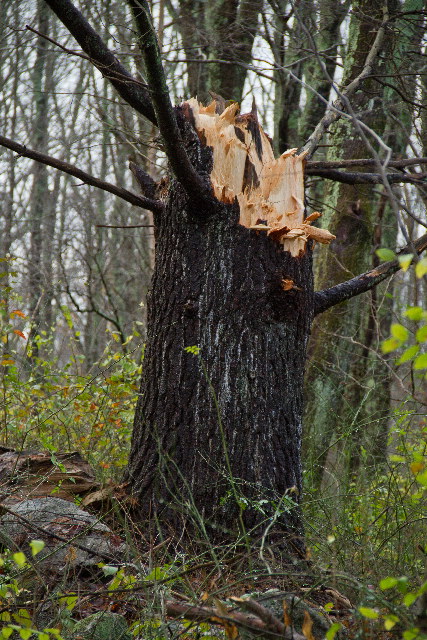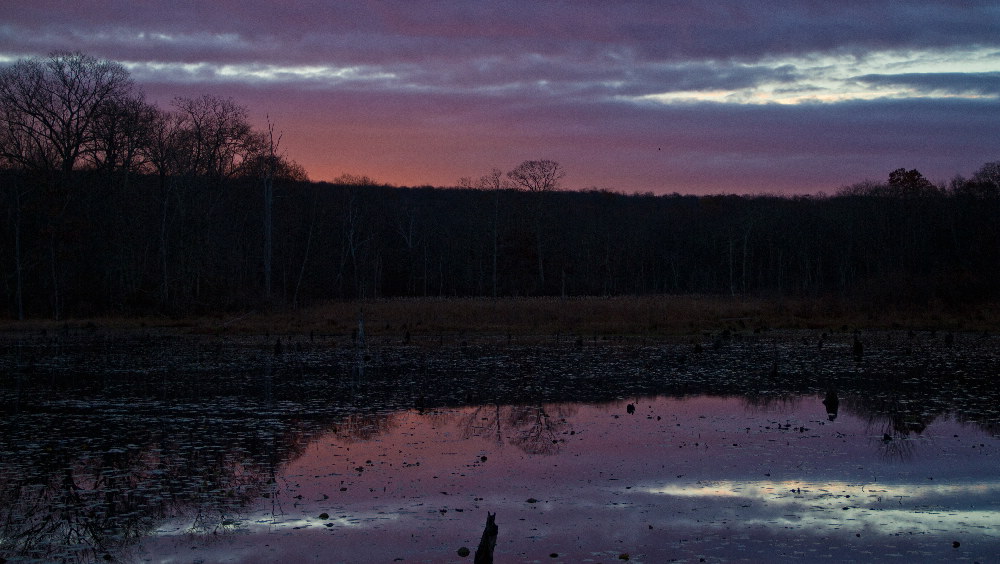Along the Air Line... 2012 - Fall, Part 4 The Air Line Trail in Eastern Connecticut - Stan Malcolm Photos |
mHome Page Stan's FlickR Albums |
October 15th. So-so foliage from Lyman Viaduct. |
|
|
Still trying for the perfect shot of the brownstone bridge over River Road. Foliage isn't cooperating. |
|
|
|
|
October 17th. Painted Turtles (Chrysemys picta) out basking on a warmish afternoon. |
October 18th. Yellow-rumped Warblers (Dendroica coronata) are still around. |
One of several immature American Robins (Turdus migratorius) flocking in the marsh. |
An unexpected delight: Red-winged Blackbirds (Agelaius phoeniceus) passing through and calling. Doubt I'll hear them again until they return in mid-February. |
|
One of the small Accipters, probably an immature Sharp-shinned Hawk (Accipter striatus) or a Cooper's Hawk (Accipter cooperii). Definitely hunting birds. |
Witch Hazel (Hamamelis virginiana) is in bloom. |
Scratch the bark of a twig with a fingernail and smell the distinctive aroma. |
October 20th. A warm, sunny afternoon. |
The Oaks have finally turned color. |
|
|
|
The invasive Firebush turns pink in the shade, and red in the sun. |
A short walk down the Colchester Spur. |
The old distillery building now has been shingled and garage doors were installed. I heard from the new owner, who plans to move his business there: Colchester Construction. (Thankfully, the Cadillac dealer rumor was false.) |
A flock of Cedar Waxwings (Bombycilla cedrorum) were passing through... |
...feeding on Multiflora Roase (Rosa multiflora) "hips" (= fruits). |
Both these birds appear to be juveniles. |
October 22nd. |
|
Canada Geese, taxiing out for takeoff. |
And they're off! |
October 26th. A Red Maple (Acer rubrum) seedling close to the ground has turned color long after mature trees have lost all their leaves. |
|
October 28th. A few of more than thirty Canada Geese (Branta canadensis) that spent the night at Raymond Brook Marsh. |
And they're off! |
Woolly Alder Aphids (Prociphilus tessellatus) on Alder. The waxy strands exuded from pores on their bodies serve as protection and perhaps insulation. Under the wax, the aphids are grey in color and all females which reproduce parthenogenetically; that is, asexually. Read more. |
A male Short-winged Blister Beetle (Meloe angusticollis). They get their name because the wing covers (elytra) are short and the wings are not functional. If handled or otherwise threatened, they "reflexively bleed" from leg joints. Their blood contains cantharadin, an irritant in low doses and a blistering agent and poison in concentrated form. Cantharadin is the active ingredient in "Spanish fly." The larvae feed on bee larvae and food supplies in the nests of solitary bees. Cantharadin coating the beetle's eggs repels insects that might otherwise eat them. |
Males are distinguished by the odd kink in their antennae. I don't know if this is sensory or a grooming device - or both. As large as the abdomen is, the female's abdomen is much larger. Here's a video I took of a female two years ago. |
October 30th. Hurricane Sandy moved out on Tuesday afternoon. Still breezy, dark clouds and showers. Thankfully, the marsh area came through just fine. |
A large Pine came down on the trail between Old Colchester Road and Grayville Road. |
|
|
Mallards (Anas platyrhynchos) made it through the storm just fine. |
|
October 31st. Lots of Yellow-rumped Warblers (Dendroica coronata) around, but rarely still or near enough for pictures. I think these are immature. |
They also stay deep in vegetation, making it tough to get a clear shot. |
Terrible picture; beautiful bird. Sure does blend in. Many thanks to Russ Smiley who says, "Regarding the last image of a sparrow, it is not a song but white-throated sparrow (either brown stripe variety or juvenile white striped variety, hard for me to tell from rear view). Like the arrival of your beloved redwing blackbirds in March, late October marks the return of these birds to the area. They’ll be making their rattling whistle chirp from the underbrush from now until May." White-throated Sparrow (Zonotrichia albicollis). |
November 3rd. Dawn over Raymond Brook Marsh. |
|
|
|
The view to the north. |
|
|
|
|
Ghost Run 2012 began at 9:00. Pictured are Bekkie Wright and Joseph Poloquin. They finished a respectable 196 and 197 out of a field of 287 runners. Follow these links for Photos at Raymond Brook Marsh and Race Results. Photos from previous years' Ghost Runs. |




